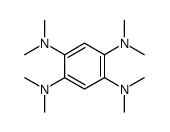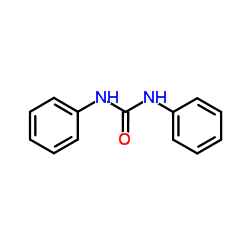4506-66-5
| Name | benzene-1,2,4,5-tetramine,tetrahydrochloride |
|---|---|
| Synonyms |
Benzene-1,2,4,5-tetrayltetraamine tetrahydrochloride
1,2,4,5-tetraaminobenzene tetra-hydrochloride 1,2,4,5-Benzenetetramine, tetrahydrochloride Benzene-1,2,4,5-tetramine tetrahydrochloride EINECS 224-822-6 MFCD00012970 Benzol-1,2,4,5-tetramintetrahydrochlorid 1,2,4,5-BENZENETETRAMINE TETRAHYDROCHLORIDE 1,2,4,5-Benzenetetramine, hydrochloride (1:4) Benzene-1,2,4,5-tetraamine tetrahydrochloride 1,2,4,5-Benzenetetraamine tetrahydrochloride 1,2,4,5-tetraaminobenzene tetahydrochloride Y15 |
| Description | Y15 is a direct and specific inhibitor of FAK auto-phosphorylation. |
|---|---|
| Related Catalog | |
| Target |
FAK[1] |
| In Vitro | Y15 directly blocks autophosphorylation activity of FAK. Y15 inhibits Y397 phosphorylation of FAK starting at 0.1 μM in Panc-1 cells. At a dose of 100 μM, Y15 has the same or better inhibition as TAE226. Of note, total FAK is downregulated at higher doses of Y15. Y15 also blocks phosphorylation of the FAK downstream substrate, paxillin. Total paxillin is decreased at higher doses similar to FAK. Thus, Y15 inhibits FAK phosphorylation in a dose-dependent manner[1]. MTS assay is completed using a range of Y15 doses on all cell lines (TT, K1, BCPAP, and TPC1, respectively).Y15 inhibited cell viability in a dose-dependent manner across all thyroid cell lines evaluated. IC50 is 2.05, 5.74, 9.99, and 17.54 μM for TT, TPC1, BCPAP, and K1, respectively[2]. |
| In Vivo | Nude mice bearing Panc si-ctrl xenografts are treated with TAE226, a dual FAK and IGF-1R tyrosine kinase inhibitor, to provide a reference for the antitumor effect of dual inhibition of FAK and IGF-1R. Without drug treatment, Panc si5-IGF-1R xenografts grew slower than Panc si-ctrl xenografts (Panc si5-IGF-1R/PBS vs. Panc si-ctrl/PBS), suggesting moderate tumor suppression by inhibiting the IGF-1R pathway only. Further inhibition of FAK activity by Y15 treatment suppresses the growth of Panc si5-IGF-1R xenografts more drastically (Panc si5-IGF-1R/PBS vs. Panc si5-IGF-1R/Y15). A similar antitumor effect is seen in Panc si-ctrl xenografts treated with TAE226 (Panc si5-IGF-1R/Y15 vs. Panc si-ctrl/TAE226). Mice demonstrates normal grooming and eating habits throughout the experiment[3]. |
| Kinase Assay | 10 μCi of [γ-32P]-ATP in a kinase buffer 20 mM HEPES, pH 7.4, 5 mM MgCl2, 5 mM MnCl2, 0.1 mM Na3VO4 with 0.1 μg of purified FAK protein are incubated in a kinase buffer with 10 μCi of [γ-32P]-ATP. The kinase reaction is performed for 5 minutes at room temperature and stopped by addition of 2× Laemmli buffer. Proteins are separated on a Ready SDS-10% PAGE gel, and the phosphorylated enolase is visualized by autoradiography[1] |
| Cell Assay | The cells are treated with Y15 or TAE226 at different concentrations for 24 hours. The 3-(4,5-dimethylthiazol-2-yl)-5-(3-carboxymethoxyphenyl)-2-(4-sulfophenyl)-2H-tetrazolium compound from Promega Viability kit is added, and the cells are incubated at 37°C for 1-2 hours. The optical density on 96-plate is analyzed with a microplate reader at 490 nm to determine cell viability. In addition, cells are stained with trypan blue after 24 hours of treatment with Y15 and the percent of cells that stained positive are determined with a hemacytometer[1] |
| Animal Admin | Mice[3] Six-week-old, female nude mice are used. 5×106 Panc si5-IGF-1R cells are mixed with matrigel and injected subcutaneously into the flank of athymic nude mice (day 0). Animals are randomly divided into two groups on day 7. One group (n=5) received Y15 (30 mg/kg) and the other received PBS as control treatment (n=5). For Panc si-ctrl xenografts, 5×106 Panc si-ctrl cells are mixed with matrigel and injected subcutaneously into the flank of nude mice. These animals are also randomly divided into two groups on day 7, and one group (n=5) received TAE226 (30 mg/kg), the other group received PBS (n=5) as control treatment. The drugs and PBS are administered through intraperitoneal injection in a total volume of 0.1 mL. Tumor sizes are measured every 3 or 4 d in length (mm)×width (mm) starting from day 10. Tumor volume is calculated as volume (cm3)= ½×length (cm)×width(cm)2. |
| References |
| Boiling Point | 400.9ºC at 760mmHg |
|---|---|
| Melting Point | ≥300ºC(lit.) |
| Molecular Formula | C6H14Cl4N4 |
| Molecular Weight | 284.014 |
| Flash Point | 233.6ºC |
| Exact Mass | 281.997253 |
| PSA | 104.08000 |
| LogP | 5.54820 |
| Index of Refraction | 1.827 |
| Storage condition | Desiccate at RT |
| Water Solubility | H2O: soluble20mg/mL, clear |
| Symbol |

GHS07 |
|---|---|
| Signal Word | Warning |
| Hazard Statements | H315-H319-H335 |
| Precautionary Statements | P261-P305 + P351 + P338 |
| Personal Protective Equipment | dust mask type N95 (US);Eyeshields;Gloves |
| Hazard Codes | Xi |
| Risk Phrases | R36/37/38 |
| Safety Phrases | S26 |
| RIDADR | NONH for all modes of transport |
| WGK Germany | 3 |
| HS Code | 2921590090 |
|
~82% 
4506-66-5 |
| Literature: E I DU PONT DE NEMOURS AND COMPANY; GOLDFINGER, MARC B.; PELLENBARG, TIMOTHY Patent: US2014/66629 A1, 2014 ; Location in patent: Paragraph 0073-0075 ; |
| Precursor 1 | |
|---|---|
| DownStream 5 | |
| HS Code | 2921590090 |
|---|---|
| Summary | 2921590090. other aromatic polyamines and their derivatives; salts thereof. VAT:17.0%. Tax rebate rate:13.0%. . MFN tariff:6.5%. General tariff:30.0% |


![pyrazino[2,3-g]quinoxaline structure](https://image.chemsrc.com/caspic/490/261-43-8.png)

![N-[2,4,5-tris(propanoylamino)phenyl]propanamide structure](https://image.chemsrc.com/caspic/207/631869-09-5.png)
